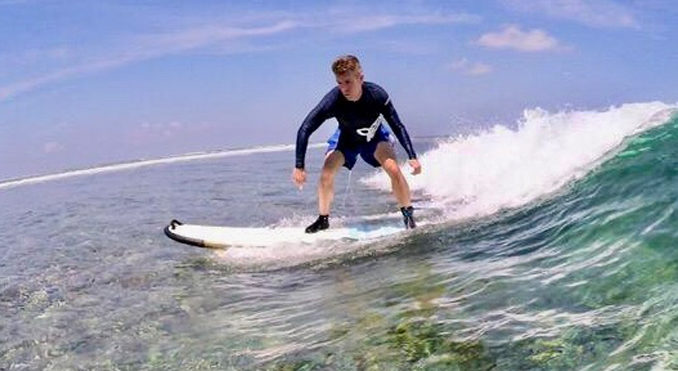
Safe Summer Surfing in Montauk

We can talk endlessly about surf etiquette and proper behavior in the line-up, but we often gloss over some basic safety procedures to be conscious of while surfing in Montauk and beyond.
If you have not witnessed or experienced a major surf accident, you may not be motivated or aware of the importance of learning what to do. Perhaps there is a bit of diffusion of responsibility, as in, other people around you will know what to do. In a surfing community with plenty of beginners without a lifeguard in sight, you owe it to yourself and everyone around you to learn how you can help if something goes wrong.
Having witnessed a few gruesome injuries and had personally ended up in the ER with stitches due to a fin colliding with a foot, everyone’s cooperation and assistance on the beach was crucial. We may always battle for waves, but we have to stick together when it comes to keeping each other safe.
Let’s face it, we get complacent. Surfing feels safe after a while but there is always a risk of injury so you might as well come to the beach prepared. The most basic? Learn CPR. As a surfer and a fellow human being, why not get trained in a life-saving practice that can truly mean the difference between life and death? If you are armed with first-response knowledge, you can also prevent others that are not as informed as you are from making mistakes. Maybe you will even choose to continue with ocean survival classes, so a good start is getting certified in basic CPR.
Know your signals. An arm wave or hand up usually calls attention that someone is in trouble, while wrists crossed above your head typically signals someone is submerged. Patting the top of your head with one arm means everything is ok, and our cheeky friends in Hawaii favor putting their hands together above their head in yoga prayer pose, signaling a shark sighting.
If you happen to be in the water when someone is in trouble, use your board as the floatation device so you are not pulled under with the person that is panicking. If you are calm and speak evenly, this will reduce the chaos around the situation where the person is fighting for their life. You want the one victim to survive, not two victims that do not.
Whenever someone is injured and its possibly impacting their neck or spine, do not move them unless absolutely necessary. If you do not have spinal training or knowledge, warn others around you that unless there is a shark or danger of drowning, do not move the person at all.
Edit your contacts. If you are a local, you likely do not think you need to know emergency numbers off hand. Put the local numbers in your phone, especially if you personally know any EMT buddies, physicians, police, and fire department friends. This is critical when traveling abroad, especially if you have ever struggled with dialing the proper country codes NOT in an emergency situation. Did you know the European 911 is 112? Before you go, make sure the country you are surfing in has a police department phone number saved in your phone contacts.
Speaking of traveling abroad, you might want to consider travel insurance. Different than medical insurance, its less expensive and covers an injury if you’re in another country. Some people add diver’s insurance also as a backup. We have friends that always travel with duct tape, crazy glue, gauze and material to make a tourniquet. This was a result of a surf accident that was luckily mediated until the hospital visit with a medical kit someone found in their car (that happened to come with the car). While that may sound extreme, you will be relieved to have it if something happens. The worst-case scenario is you dragged it along for nothing, which is actually the best-case scenario of all.
